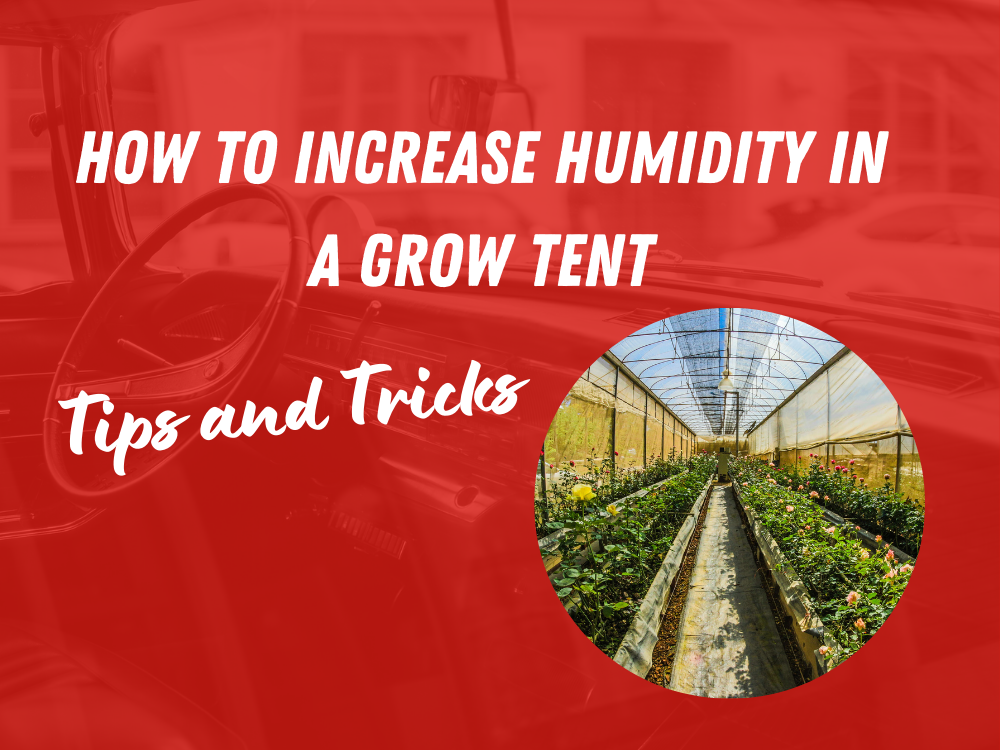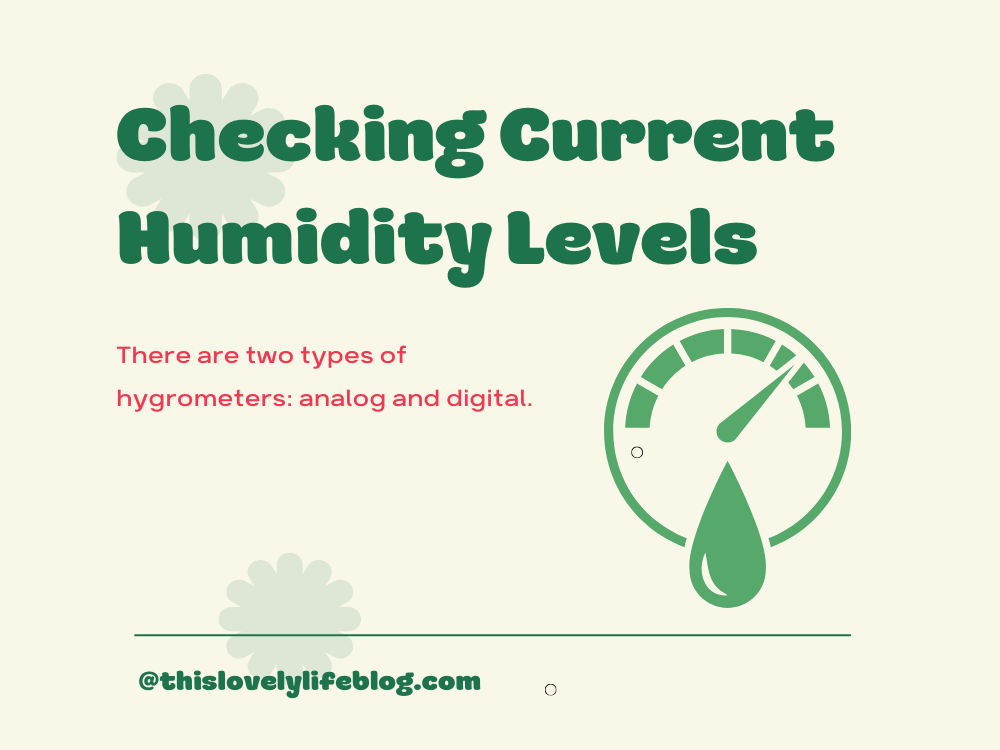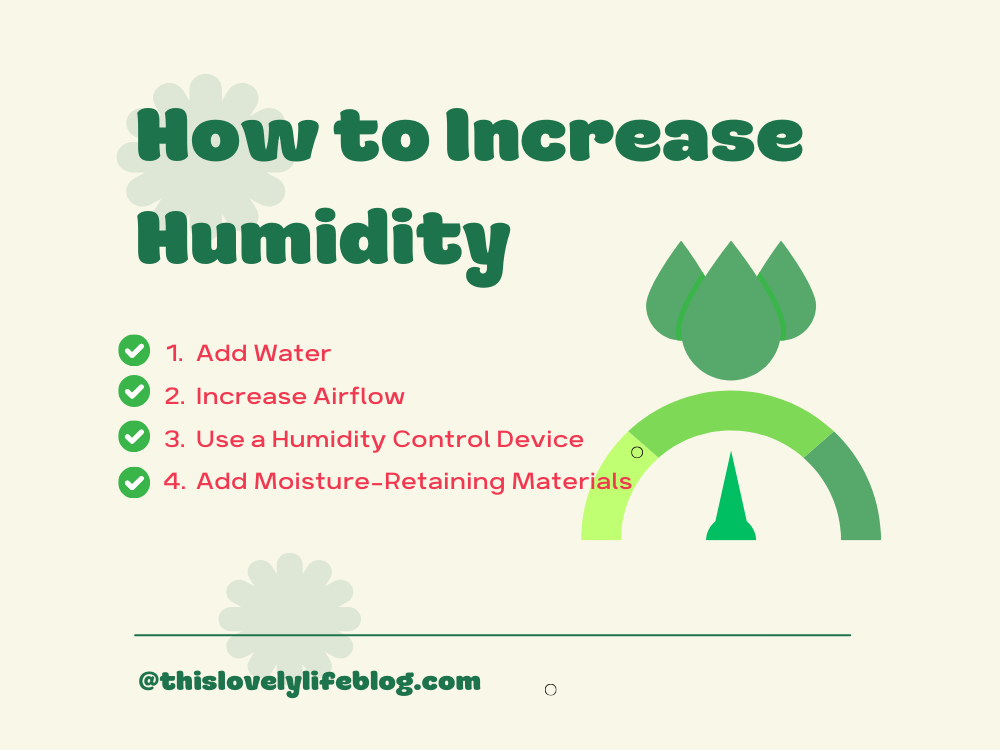
Increasing humidity in a grow tent is essential for the growth and health of plants. However, maintaining the right humidity level can be challenging, especially in dry climates or during winter months. Low humidity levels can cause plants to dry out, wilt, and die. Therefore, it is crucial to learn how to increase humidity in a grow tent to ensure the success of your indoor garden.
There are several methods to increase humidity levels in a grow tent. One of the easiest ways is to use a humidifier. A humidifier will add moisture to the air, which will increase the humidity level in your grow tent. Another method is to place a tray of water near your plants. The water will evaporate, creating moisture in the air, which will increase the humidity level. Additionally, misting your plants with water can also increase humidity levels. However, it is essential to avoid misting too much, as it can cause water to accumulate on leaves, which can lead to mold and other fungal diseases.
Table of Contents
Understanding the Importance of Humidity in a Grow Tent
Maintaining the right humidity level in a grow tent is essential for the healthy growth of plants. Humidity refers to the amount of water vapor present in the air. In a grow tent, the humidity level should be carefully monitored and controlled to ensure that plants receive optimal conditions for growth.
Humidity levels that are too low can cause plants to dry out, while high humidity levels can lead to the growth of mold and mildew. The ideal humidity range for most plants in a grow tent is between 50% and 60%.
The environment inside a grow tent is different from the outside world, and humidity levels can fluctuate rapidly. Factors such as temperature, ventilation, and the number of plants in the tent can all affect humidity levels. It is important to monitor humidity levels regularly and adjust them as necessary.
Plants in a grow tent rely on the environment inside the tent for their growth, and humidity is a critical component of that environment. By understanding the importance of humidity and carefully controlling it, growers can ensure that their plants receive the optimal conditions for healthy growth.
Checking Current Humidity Levels

Before attempting to increase the humidity in a grow tent, it is important to first determine the current humidity level. This can be done using a hygrometer, which is a device that measures the amount of moisture in the air.
There are two types of hygrometers: analog and digital. Analog hygrometers use a needle and dial to display the humidity level, while digital hygrometers provide a more precise reading and often have additional features such as temperature readings.
To use a hygrometer, simply place it in the grow tent and wait for it to display the current humidity level. It is important to take multiple readings throughout the day to ensure that the humidity level remains consistent.
Once the current humidity level has been determined, it will be easier to determine how much the humidity needs to be increased to reach the desired level. This can be done using a variety of methods, such as adding a humidifier or misting the plants with water.
Overall, checking the current humidity level is an important step in ensuring that plants in a grow tent are receiving the proper amount of moisture.
How to Increase Humidity

If the humidity levels in your grow tent are too low, it can negatively impact the growth of your plants. Here are some ways to increase humidity in your grow tent:
1. Add Water
One of the easiest ways to increase humidity is to add water to your grow tent. This can be done by misting your plants with a spray bottle, placing a tray of water in your grow tent, or using a humidifier.
2. Increase Airflow
Increasing airflow in your grow tent can help to increase humidity levels. This can be done by using a fan to circulate air in your grow tent. By moving air around, you can prevent stagnant air pockets that can cause low humidity.
3. Use a Humidity Control Device
Using a humidity control device such as a hygrometer can help you monitor and adjust humidity levels in your grow tent. By keeping track of humidity levels, you can adjust your watering and ventilation practices to maintain optimal humidity levels for your plants.
4. Add Moisture-Retaining Materials
Adding moisture-retaining materials such as peat moss or vermiculite to your soil can help to increase humidity levels in your grow tent. These materials can absorb and retain moisture, helping to maintain a consistent level of humidity in your grow tent.
By following these tips, you can increase humidity levels in your grow tent and promote healthy plant growth.
Using a Humidifier
One of the easiest ways to increase humidity in a grow tent is by using a humidifier. A humidifier is a device that adds moisture to the air, making it more humid. It is an effective way to control humidity levels in a grow tent, especially during the dry winter months.
When selecting a humidifier for your grow tent, there are a few things to consider. First, you need to determine the size of your grow tent and the amount of humidity you need to add. You can use a hygrometer to measure the humidity levels in your grow tent and determine how much moisture you need to add.
There are two types of humidifiers: cool mist and warm mist. Cool mist humidifiers use a fan to blow air over a wick or filter that is saturated with water, while warm mist humidifiers use a heating element to boil water and release steam into the air. Both types of humidifiers can be used in a grow tent, but warm mist humidifiers are more effective in raising humidity levels quickly.
When using a humidifier, it is important to monitor the humidity levels regularly to ensure that they do not get too high. High humidity levels can lead to mold and mildew growth, which can damage your plants. You can use a humidistat to control the humidity levels and turn off the humidifier when the desired humidity level is reached.
Overall, a humidifier is an effective tool for controlling humidity levels in a grow tent. By selecting the right type of humidifier and monitoring humidity levels regularly, you can create an ideal environment for your plants to thrive.
Other Methods to Increase Humidity
In addition to using a humidifier, there are other methods to increase humidity in a grow tent. These methods are cost-effective and can be easily implemented.
One method is to use a spray bottle filled with water. Simply spray the water into the air inside the grow tent. This will increase the humidity level in the tent.
Another method is to hang wet towels inside the grow tent. The towels will absorb moisture from the air and increase the humidity level. It is important to make sure the towels are not dripping wet as this can cause mold growth.
A bucket of water can also be placed inside the grow tent. As the water evaporates, it will increase the humidity level. This method is effective but requires regular monitoring and refilling of the bucket.
It is important to note that these methods may not be as effective as using a humidifier. However, they are useful alternatives for those who cannot afford a humidifier or need a temporary solution.
Overall, increasing humidity in a grow tent is crucial for the healthy growth of plants. By using a humidifier or other methods, growers can ensure their plants receive the proper moisture levels they need to thrive.
Controlling Temperature and Ventilation
Temperature and ventilation are crucial factors that affect the humidity level in a grow tent. Proper control of temperature and ventilation can help to increase the humidity level and maintain it at an optimal level for plant growth.
One of the most effective ways to control temperature and ventilation is by using a ventilation system. A good ventilation system will help to regulate the temperature and humidity level in the grow tent by removing excess heat and moisture. This can be achieved by using an exhaust fan to remove hot air and a carbon filter to remove any odors.
It is also important to ensure that the fan speed is set correctly. If the fan speed is too high, it may remove too much moisture from the air, resulting in a decrease in humidity levels. If the fan speed is too low, it may not remove enough moisture, resulting in high humidity levels.
Proper ventilation is also important to prevent the buildup of heat and humidity in the grow tent. This can be achieved by using a ventilation system that is designed to circulate air effectively. It is important to ensure that there is enough space between the plants to allow for proper airflow.
In addition, it is important to control the temperature inside the grow tent. This can be achieved by using a heater or air conditioner to regulate the temperature. It is important to ensure that the temperature is not too high or too low, as this can affect the humidity level in the grow tent.
Overall, controlling temperature and ventilation is crucial for increasing the humidity level in a grow tent. By using a ventilation system, setting the fan speed correctly, ensuring proper ventilation, and controlling the temperature, growers can create an optimal environment for plant growth.
Monitoring Plant Growth and Health
Monitoring plant growth and health is an essential aspect of growing plants in a grow tent. By keeping an eye on the plants, growers can identify any issues early and take corrective measures to prevent them from becoming severe.
One of the critical factors to monitor is the plant’s growth rate. This is especially important during the vegetative stage, where plants require a lot of nutrients to grow. During this stage, growers should ensure that the plants are getting enough light, water, and nutrients to support their growth.
Another factor to monitor is the health of the leaves. The leaves are an indicator of the plant’s overall health, and any issues with the leaves can indicate a problem with the plant. Growers should look out for yellowing leaves, brown spots, or any other signs of disease or nutrient deficiency.
Growers should also monitor the humidity levels in the grow tent. High humidity levels can lead to mold and mildew growth, while low humidity levels can cause the plants to dry out. By monitoring the humidity levels, growers can adjust the environment to ensure that the plants are thriving.
During the flowering stage, growers should monitor the plant’s nutrient intake. Flowering plants require different nutrients than vegetative plants, and growers should adjust their feeding schedule accordingly. Growers should also monitor the plants’ bud development, as this can indicate the overall health and yield of the plant.
In summary, monitoring plant growth and health is crucial to the success of any grow tent operation. By keeping an eye on the plants’ growth rate, leaf health, humidity levels, and nutrient intake, growers can ensure that their plants are healthy and thriving.
Dealing with High Humidity Issues
High humidity in a grow tent can cause several problems, including mold and mildew growth, which can harm plants and affect their quality. If you notice that the humidity levels in your grow tent are too high, there are several ways to address the issue.
One effective way of dealing with high humidity is to use a dehumidifier. A dehumidifier can help remove excess moisture from the air, reducing the humidity levels in your grow tent. When selecting a dehumidifier, it is important to choose one that is appropriate for the size of your grow tent and can handle the amount of moisture present.
Another way to lower humidity levels is to increase ventilation. Good air circulation can help remove excess moisture from the air and keep humidity levels in check. You can achieve this by installing fans or using an air exchange system.
If you are dealing with mold and mildew growth, it is important to address the issue promptly. Mold and mildew can harm plants and affect their quality. One way to prevent mold and mildew growth is to keep the grow tent clean and dry. Wiping down surfaces and equipment regularly can help prevent the growth of mold and mildew.
In addition, it is important to monitor humidity levels regularly. Keeping track of humidity levels can help you identify potential issues before they become a problem. You can use a hygrometer to measure humidity levels in your grow tent.
In summary, high humidity can cause several problems in a grow tent, but there are several ways to address the issue. Using a dehumidifier, increasing ventilation, keeping the grow tent clean and dry, and monitoring humidity levels can all help prevent mold and mildew growth and ensure healthy plant growth.
Conclusion
Increasing humidity in a grow tent is not a complicated process, but it requires attention to detail and patience. The key is to maintain a balance between the humidity level and temperature. The ideal humidity level for most plants is between 50% and 60%. However, some plants may require higher or lower humidity levels.
There are several methods to increase humidity in a grow tent, such as using a humidifier, misting the plants, placing a tray of water, or using a wet towel. It is essential to monitor the humidity level regularly and adjust the method accordingly.
It is also crucial to maintain proper ventilation to prevent the growth of mold and mildew. Proper ventilation will also help to control the temperature and humidity level in the grow tent.
In summary, increasing humidity in a grow tent requires attention to detail and patience. It is essential to maintain a balance between the humidity level and temperature and to monitor the humidity level regularly. With the right method and proper ventilation, growers can create an ideal environment for their plants to thrive.